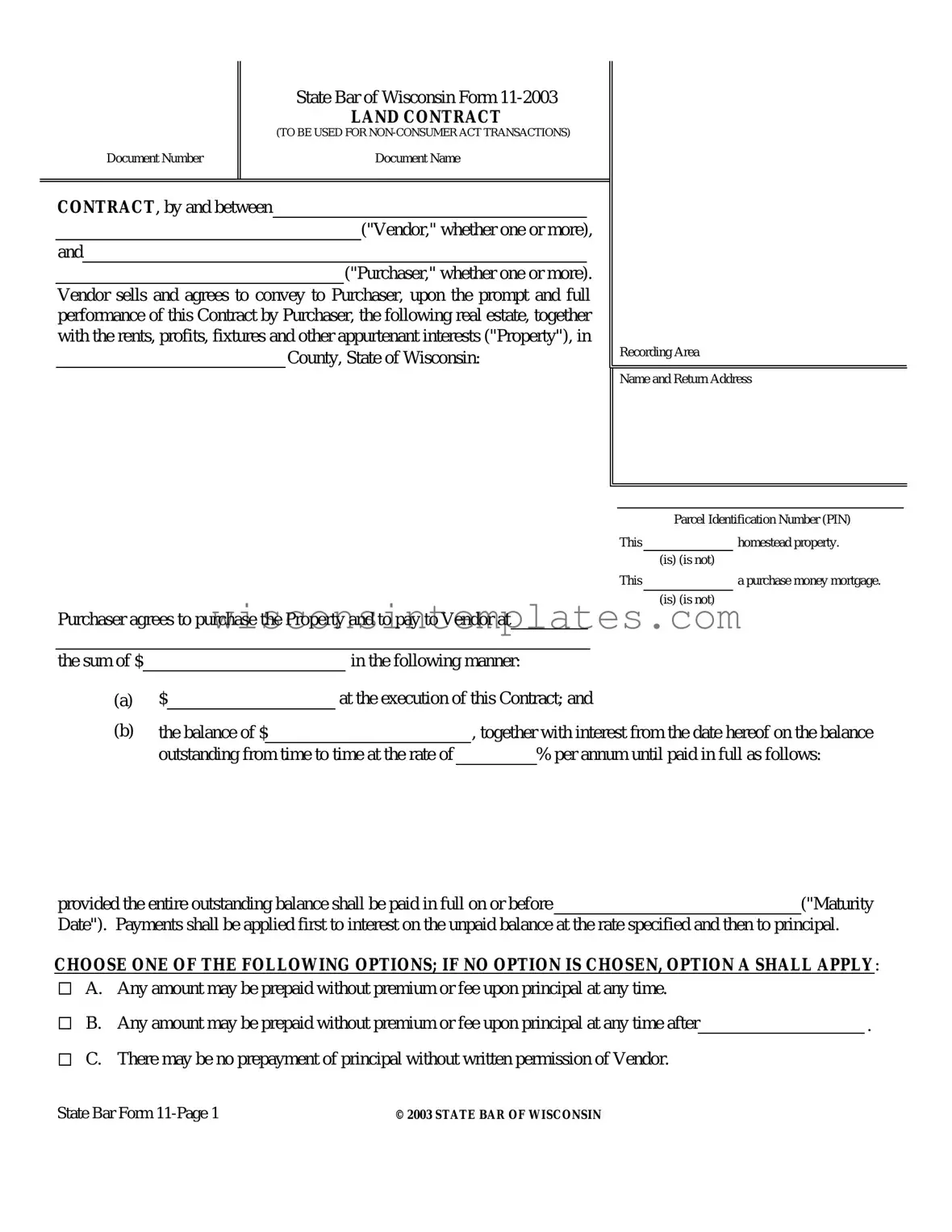The Wisconsin Land Contract form serves as a crucial tool in real estate transactions, particularly for non-consumer act agreements. This legally binding document outlines the relationship between the vendor and the purchaser, detailing the sale of real estate and the obligations each party undertakes. Key components of the form include the identification of the property being sold, the financial terms of the sale, and the responsibilities of the purchaser regarding taxes, insurance, and property maintenance. It specifies payment structures, including initial payments and interest rates, while also addressing prepayment options and the application of payments towards principal and interest. Furthermore, the form emphasizes the importance of maintaining the property and ensuring compliance with local laws, as well as the consequences of defaulting on payments. Upon successful completion of all contractual obligations, the vendor agrees to transfer ownership to the purchaser through a warranty deed, ensuring that the property is free from liens and encumbrances. Given its complexity and the potential legal ramifications, understanding the nuances of the Wisconsin Land Contract form is vital for both parties involved in the transaction.
